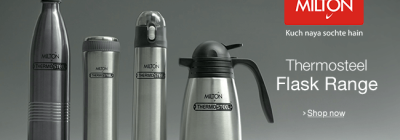16 Jul


Posted By
0 Comment(s)
392 View(s)
Comparing Gas Toasters vs. Electric Toasters: Which Is Better?
Toasters are a staple in many households, playing a crucial role in preparing a quick and easy breakfast. They come in various types, with gas and electric toasters being the most prominent. Understanding the differences between these two can help consumers make an informed decision that best suits their needs and lifestyle.
1. Functionality
Gas Toasters:
Gas toasters operate by using a flame to directly heat the bread. They are typically connected to a propane or natural gas source and can be used both indoors and outdoors. One of the significant advantages of gas toasters is their rapid heating capability. They can reach the desired temperature quickly, making them ideal for situations where speed is essential. Additionally, gas toasters are particularly useful in areas where electricity may not be readily available, such as camping sites or remote locations.
However, gas toasters come with their own set of challenges. They often have limited temperature control compared to their electric counterparts. The open flame poses potential safety risks, including burns and fire hazards, especially if not used correctly. Moreover, the requirement for proper ventilation can limit where these toasters can be safely operated.
Advantages:
Quick heating: Can reach the desired temperature rapidly.
Versatility: Useful in areas without reliable electricity.
Portability: Suitable for outdoor activities like camping.
Disadvantages:
Limited temperature control: Less precision in toasting level.
Safety concerns: Risks of burns and fire hazards due to open flame.
Ventilation requirement: Needs proper ventilation for safe indoor use.
Electric Toasters:
Electric toasters, on the other hand, use electrical heating elements to toast the bread. These appliances are designed with ease of use in mind and come with various settings for precise temperature control. Users can select their preferred toasting level, ensuring consistent results every time. Electric toasters are considered safer for indoor use as they do not involve an open flame and often come with built-in safety features such as automatic shut-off and cool-touch exteriors.
The main downside of electric toasters is their reliance on electricity, making them unsuitable for off-grid locations. Additionally, while some high-end models can be costly, their initial investment can be offset by the convenience and features they offer.
Advantages:
Precise temperature control: Consistent toasting results.
Safer operation: No open flame, built-in safety features.
Convenience: Easy to use with preset functions.
Disadvantages:
Dependence on electricity: Not suitable for off-grid locations.
Higher initial cost: Advanced models can be expensive.
2. Efficiency and Performance
Gas Toasters:
In terms of efficiency, gas toaster grill excel in heating speed. They can toast bread quickly, which is beneficial for those in a hurry. When it comes to energy consumption, gas toasters can be efficient, particularly if using a cost-effective fuel source like natural gas. However, the performance can vary depending on the model and the user’s ability to control the flame accurately.
Electric Toasters:
Electric toasters are designed to be energy-efficient, with many models featuring power-saving modes and energy-efficient ratings. The performance of electric toasters is generally superior in terms of toasting consistency. Advanced features such as multiple toasting settings, defrost options, and reheat functions contribute to their high performance. These additional features make electric toasters versatile and user-friendly.
3. Safety
Gas Toasters:
Safety is a crucial consideration for gas toasters. The use of an open flame requires careful handling and proper ventilation to avoid accidents. Users must regularly check for gas leaks and ensure that the toaster is in good working condition. Proper maintenance includes cleaning the burners and checking connections to prevent any potential hazards.
Electric Toasters:
Electric toasters come with a range of safety features that enhance their appeal for indoor use. Automatic shut-off functions prevent overheating and reduce the risk of fire. Insulated exteriors keep the toaster cool to the touch, minimizing the risk of burns. Regular maintenance involves cleaning the crumb tray and checking the electrical cord for any damage, ensuring long-term safety and durability.
4. Practicality and Convenience
Gas Toasters:
Classic Gas toasters shine in scenarios where portability and outdoor use are essential. They are ideal for camping trips, outdoor kitchens, or areas with unreliable electricity. Their design often allows for easy transportation and storage, making them a practical choice for those who frequently cook outdoors.
Electric Toasters:
Electric toasters are designed with convenience in mind. Features like multiple toasting settings, removable crumb trays, and easy-to-clean surfaces make them a practical addition to any modern kitchen. They integrate seamlessly with other kitchen appliances and fit well on countertops, making them a convenient choice for everyday use.
5. Cost and Sustainability
Gas Toasters:
The cost of gas toasters includes the initial purchase price and the ongoing expense of fuel. While natural gas can be a cost-effective option, the overall cost can vary based on fuel availability and consumption. In terms of sustainability, gas toasters have a lower environmental impact if they use clean-burning fuels. However, the production and transportation of gas can still contribute to the carbon footprint.
Electric Toasters:
Electric toasters generally have a higher initial cost, but they can be more economical in the long run due to lower operational expenses. The energy efficiency of electric toasters makes them a sustainable choice, particularly models with high energy efficiency ratings. Their long lifespan and reduced energy consumption contribute to a smaller environmental impact compared to gas toasters.
Making a Choice
Both gas and electric toasters have their unique advantages and disadvantages. Gas toasters offer quick heating and portability, making them suitable for outdoor and off-grid use. However, they come with safety concerns and limited temperature control. Electric toasters provide precise toasting, safety features, and convenience, making them ideal for indoor use and modern kitchens. Ultimately, the choice between gas and electric toasters depends on individual needs and preferences, including lifestyle, safety considerations, and environmental impact. By weighing these factors, consumers can select the toaster that best fits their requirements and enhances their breakfast experience.





Leave a Comment